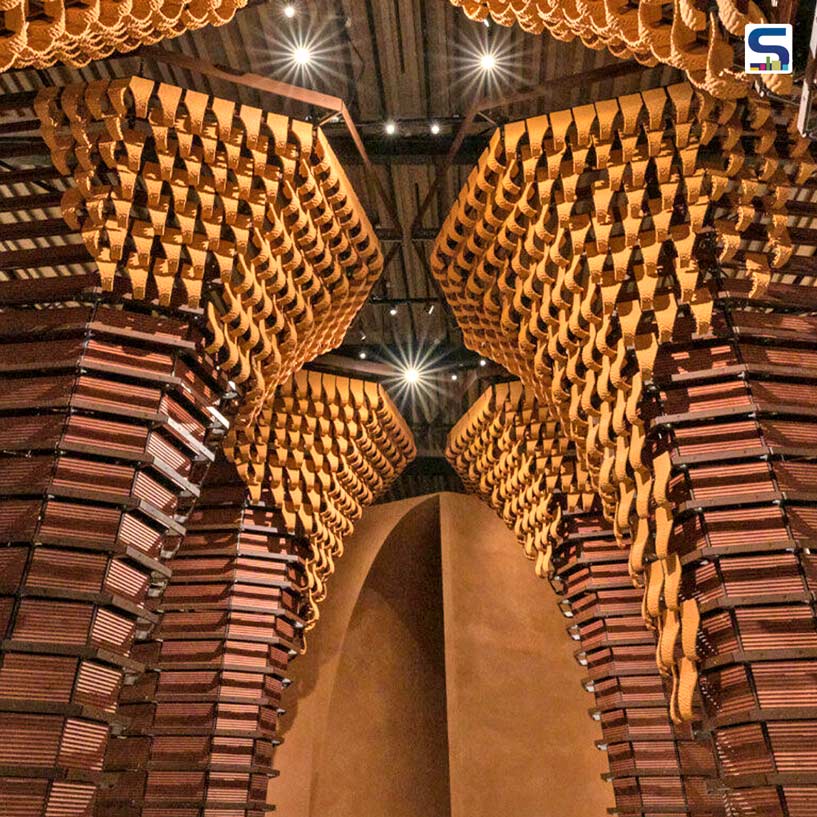
At the 2023 Venice Architecture Biennale, the National Pavilion of Saudi Arabia put together an exhibition called ‘IRTH’ (meaning ‘legacy’ in Arabic). This captivating, multi-faceted show has been curated by Basma and Noura Bouzo and was designed by architect AlBara Saimaldahar. The display looks into the connection between physical and spiritual characteristics and how it links the past to the future through one of the oldest materials used in Saudi architecture: earth. Read more below on SURFACES REPORTER (SR):
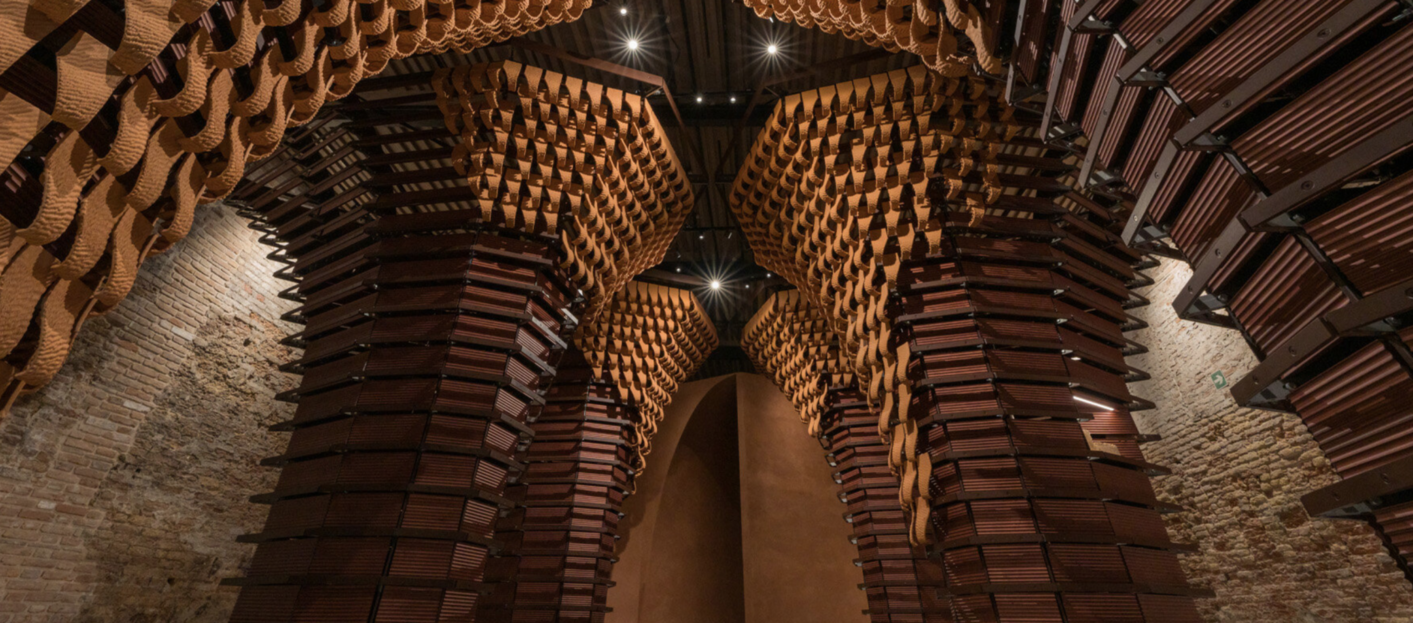
The intersection of Past and Future
At this year’s Venice Architecture Biennale, IRTH delves into the concept of connecting past and future. The spotlight is on Saudi Arabias most characteristic building material – earth – highlighting its textures and colours that span the countrys entire range of natural tones, from desert dunes to the red sea coast.
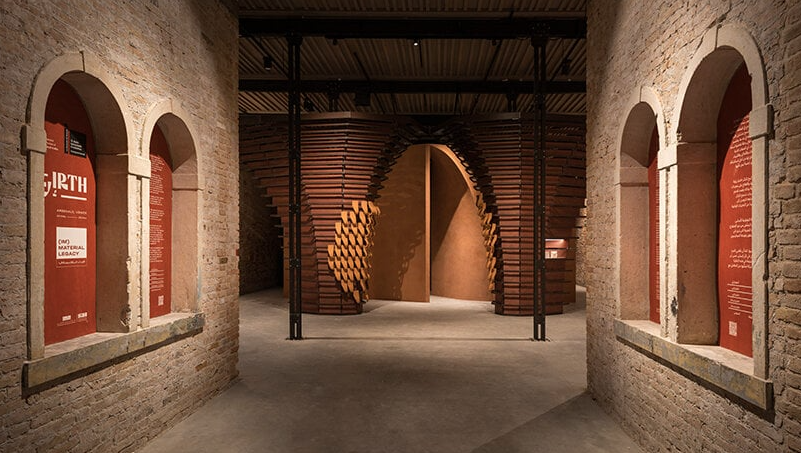 This project examines how materials used to construct built environments can act as storytellers. Their many properties – both visible and invisible – tell us much about a nations people, while also transferring information from traditional knowledge to new ways of constructing that create a continuous line between the two.
This project examines how materials used to construct built environments can act as storytellers. Their many properties – both visible and invisible – tell us much about a nations people, while also transferring information from traditional knowledge to new ways of constructing that create a continuous line between the two.
Multi-Layered Design of the Saudi Arabia Pavilion
The Saudi Arabia Pavilion for 2023 has been designed with a multi-layered approach, so visitors can explore the building from multiple perspectives. The structure itself contains several sections which reflect the blending of traditional and cutting-edge technologies.
Inside, the exhibition focuses on present and future trends in Saudi architecture, as envisioned by AlBara Saimaldahar (see more here). This concept combines elements of past and present, like intricate artefacts inspired by Al-Balad and patterns taken from Jeddahs Historic district that are given a modern twist.
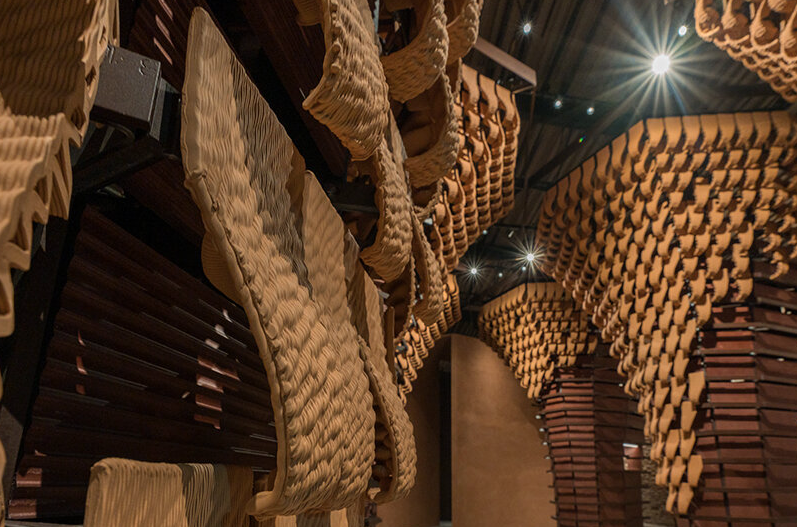 Finally, central to the project is a room designed to evoke an immersive sensory experience that stimulates individual reactions without outside influence.
Finally, central to the project is a room designed to evoke an immersive sensory experience that stimulates individual reactions without outside influence.
As you guide a journey through the Pavilions three main structures, you will pass beneath six majestic arches as traditional gateways. Their eight-sided metal structures exude grandeur while their interior wooden panels and external 3D-printed clay tiles featuring an undulating pattern resembling desert dunes give off a sense of lightness.
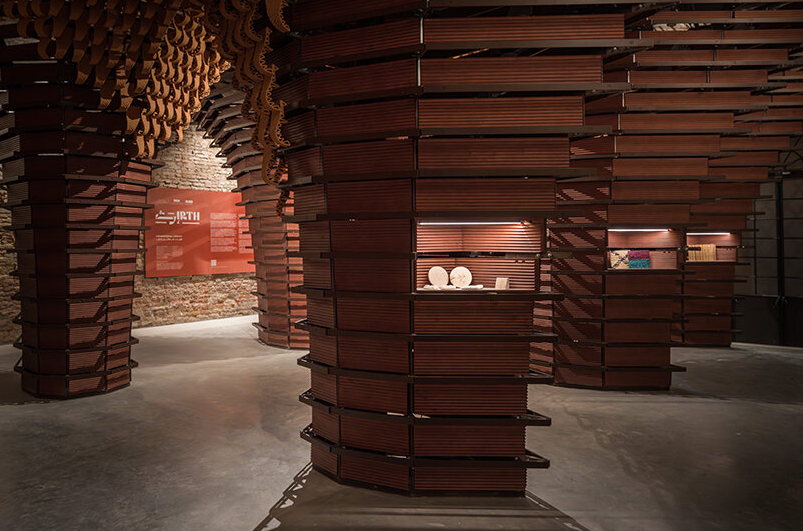 These portals give the impression of monumental architecture carved in stone or caves; something powerful and seemingly indestructible that has passed the test of time. Yet, they also convey a feeling of impermanence due to their outer coverings fading gradually before finally disappearing - much like the shifting sands of the Rub al-Khali desert or ‘the Empty Quarter’.
These portals give the impression of monumental architecture carved in stone or caves; something powerful and seemingly indestructible that has passed the test of time. Yet, they also convey a feeling of impermanence due to their outer coverings fading gradually before finally disappearing - much like the shifting sands of the Rub al-Khali desert or ‘the Empty Quarter’.
The Art of Minimalism with an Emphasis on Fragrance
An olfactory experience awaits visitors in the heart of the Pavilion. A large rectangular space, empty but filled with a uniquely created scent — lavender, frankincense, myrrh — invites contemplation of Arab culture.
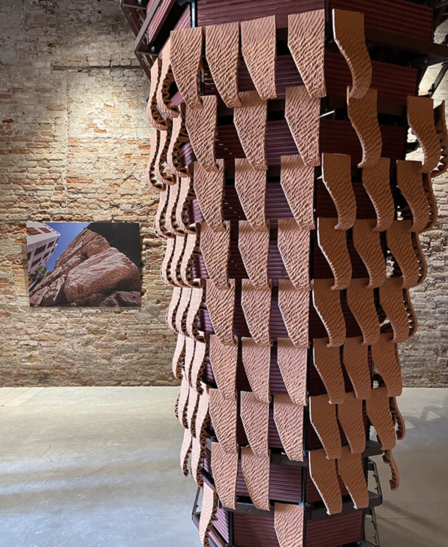 Through this essentially immaterial space with its 3D-printed clay column façade, guests can contemplate existing in a particular ‘moment’ and form individual memories that will last after the exhibition ends: at its culmination, the column will be moved to the bottom of the Red Sea where it will act as an artificial reef, creating a new aquatic ecosystem.
Through this essentially immaterial space with its 3D-printed clay column façade, guests can contemplate existing in a particular ‘moment’ and form individual memories that will last after the exhibition ends: at its culmination, the column will be moved to the bottom of the Red Sea where it will act as an artificial reef, creating a new aquatic ecosystem.
Keep reading SURFACES REPORTER for more such news stories.
You may also like to read about:
Godrej Interio and KMRCL Collaborate to Enhance the Aesthetics of Howrah, Kolkata Metro Stations | SR News Update
Govt New Precast Concrete Policy For National Highways To Improve Indias Road Network | SR News Update
This Timber Pavilion Amalgamates Research and Nature amid a Forest Canopy | Flora Pavilion
and more...